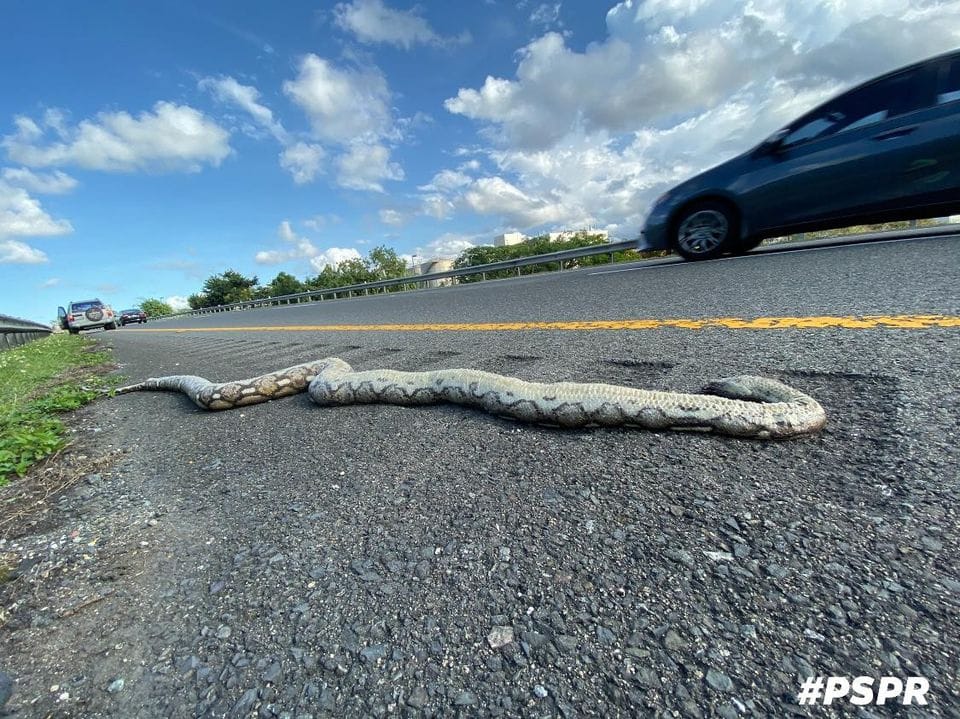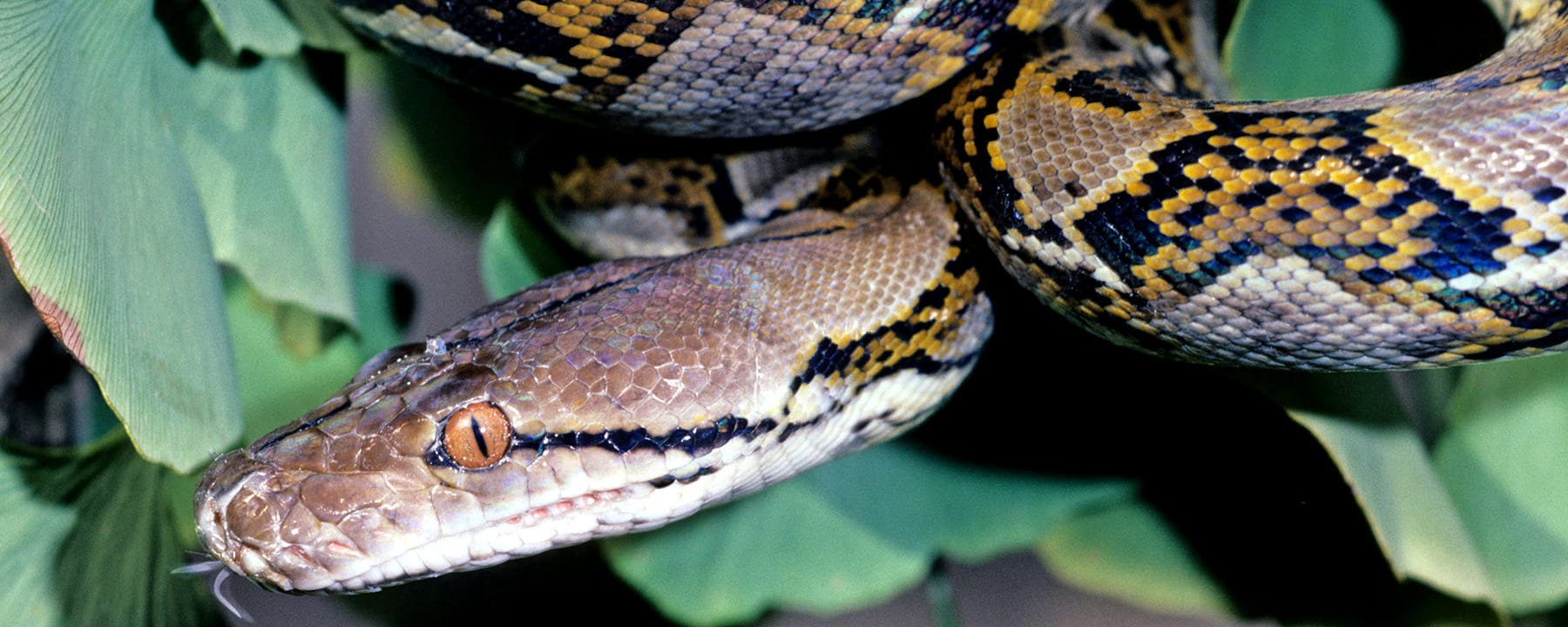A Fox News story in 2015, stated authorities in Puerto Rico caught a 3.6-meter, 70 pound Burmese Python in a river in the northern coastal town of Manati. Puerto Rico also has an introduced population of Boa constrictors, and it appears that Reticulated Pythons, the longest snake, and one that occasionally preys on humans, is now well established on the island. It is surprising that this has not been widely reported.
A Facebook post from 2019 included this photo (top right) of a road killed Reticulated Python, on the Jose de Diego highway (PR 22) Arecibo. Currently the largest sightings of this have been recorded in the towns of Arecibo, Barceloneta, Bayamón, Naranjito and Comerio.
The Federal Register (Anon, 2015) states,
“In the Commonwealth of Puerto Rico, Reticulated Pythons have been collected in the western region of the island (Aguadilla and Mayaguez), and the southern region of the island Guayama), including a 5.5-m (18-ft) long specimen (J. Saliva, pers. comm. 2009).”
A blog post dated 25 March 2017 clearly states that Reticulated Python are in the wilds of Puerto Rico and are reproducing.
Puerto Rico has nine bird species and ten reptile species that are federally endangered or threatened that would be at risk of predation or competition for prey. The island also has the large (2.7 m) endemic Puerto Rico Boa, Chilabothrus inornatus. It seems probable that this species would be in competition with the introduced retics.
According to the climate suitability maps (Reed and Rodda 2009), endangered and threatened species from parts of Florida, southern Texas, Hawaii, and Puerto Rico would be at risk from the establishment of reticulated pythons. In addition, Guam, the U.S. Virgin Islands, and other territories would have suitable habitat and climate to support reticulated pythons, and these also have federally endangered and threatened species that would be at risk if reticulated pythons became established.
On May 20, 2022, a Facebook from the Wetland Ecology of Plants and Animals Laboratory at UPR Bayamón announced (my translation) (bottom right).
“Dr. Alberto Puente from the Departamento de Biología visited us in our Laboratorio de Ecología y Conservación de Vida Silvestre UPR-Mayagüez The teacher trains our students to handle and take data on the Malayopython reticulatus, an invasive species on our island. This is part of a collaborative work between UPR Bayamón and UPR Mayagüez. Our laboratory is working on genetic analysis of the species on the island.”
Thus, it appears that the most dangerous non-venomous snake is now living and breeding in the U.S. Territory of Puerto Rico and it likely cause an ecological disaster that will rival or exceed the damage done by the Brown Tree Snake in Guam.
Literature Cited
Anonymous. 2015. Injurious Wildlife Species; Listing Three Anaconda Species and One Python Species as Injurious Reptiles; Final Rule. Federal Register 80(46): 12702-12745.
Reed RN, Rodda GH. 2009. Giant constrictors: biological and management profiles and an establishment risk assessment for nine large species of pythons, anacondas, and the boa constrictor. US Department of the Interior, US Geological Survey.














